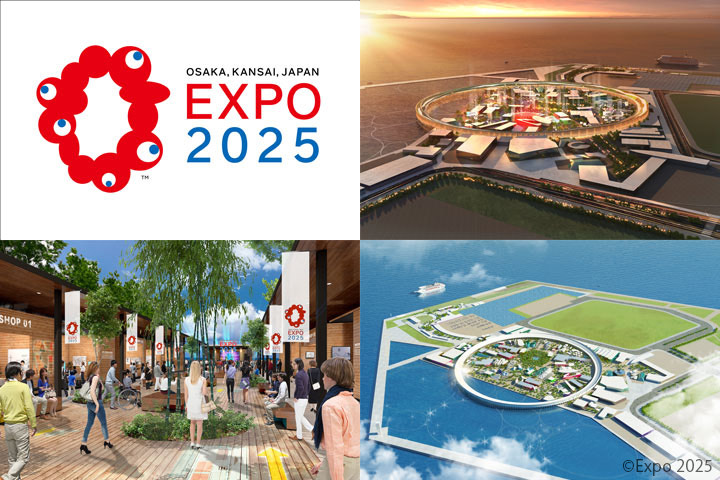Expo 2025 in Osaka was always meant to be more than a spectacle. With its guiding theme “Designing Future Society for Our Lives,” the event promised to bring together innovation, sustainability, and cultural exchange on a scale rarely seen. From April 13 to October 13, 2025, the reclaimed island of Yumeshima in Osaka Bay has transformed into a global stage where nations present their visions of a better future.
Japan hoped to welcome 28 million visitors to this grand endeavor, making it a cultural and economic landmark on par with Expo ’70, which drew a then-record 64 million attendees. Yet as the months unfold, the ambitious projections face a sobering reality: attendance has not matched expectations, enthusiasm within Japan is mixed, and concerns about ticket prices, crowd control, and unfinished construction have clouded the optimism.
The story of Expo 2025 is one of ambition meeting reality; where hopes of unity and progress are tested against skepticism, economic strain, and shifting public interest.
The Legacy of World Expos and Why Osaka Matters
World Expos, officially organized under the Bureau International des Expositions (BIE), have long served as showcases of human achievement. From the Eiffel Tower’s debut at the 1889 Paris Expo to the technological marvels unveiled at Expo 2010 in Shanghai, these gatherings have left indelible marks on history.
For Japan, Expos hold particular resonance. Expo ’70, also held in Osaka, remains legendary not only for its record-shattering attendance but also for the sense of optimism it inspired in a nation rising from post-war recovery. By choosing Osaka again for 2025, Japan aimed to rekindle that spirit, this time under the banner of addressing the United Nations’ Sustainable Development Goals (SDGs) and advancing the vision of Society 5.0, where technology and human values coexist.
The stakes are high. Japan faces demographic decline, economic challenges, and geopolitical competition in East Asia. Expo 2025 was pitched as both a symbol of Japan’s global relevance and a catalyst for domestic growth, particularly in the Kansai region.
The Theme: “Designing Future Society for Our Lives”
The official theme divides into three subthemes:
-
Saving Lives – tackling global health, pandemic preparedness, and medical innovation.
-
Empowering Lives – promoting inclusion, gender equality, and human rights.
-
Connecting Lives – advancing digitalization, AI, and cross-border cultural exchange.
Organizers envisioned Expo 2025 as a “testbed” for solutions to humanity’s most pressing issues, positioning Japan as a convener of global cooperation. Pavilions were designed not just to impress visually but to invite dialogue on climate action, sustainable architecture, and ethical technology.
Early Struggles: Indifference and Rising Costs
Even before the Expo opened, cracks appeared in the optimistic narrative.
-
Public Indifference: Polls revealed low enthusiasm. A Kyodo News survey in April 2025 found that nearly 75 percent of Japanese respondents had no intention of visiting, with only 38 percent of Osaka locals showing interest. An Asahi Shimbun poll placed disinterest as high as 81 percent.
-
Rising Costs: Originally budgeted at ¥125 billion (about $830 million), construction costs ballooned to over ¥235 billion. Safety concerns over methane pockets on the reclaimed island further delayed pavilion readiness. Several countries including India, Vietnam, and Nepal missed the opening ceremony due to unfinished structures.
-
Ticket Prices: General admission tickets, priced at ¥7,500 (about $50), drew criticism from families and students. While organizers offered discounts, many Japanese felt the cost was prohibitive for repeat visits.
These factors fed a narrative of skepticism: was Expo 2025 destined to be a costly misstep rather than a unifying moment?
A Slow Start, Then Momentum
When the Expo opened on April 13, 2025, attendance numbers confirmed the fears. Within the first week, daily turnout fell short of forecasts. Media coverage emphasized sparse crowds and questioned whether the Expo could ever reach its 28 million target.
But then, momentum began to build.
-
By April 23, just 11 days after opening, the Expo had already passed one million visitors.
-
By June 7, daily visitor numbers reached 124,000, with peaks of nearly 147,000, rivaling Tokyo Disneyland on its busiest days.
-
By the end of June, cumulative attendance surpassed 10 million, with total ticket sales topping 15 million.
A visitor survey of over 100,000 responses revealed that 84 percent would return and 80 percent were highly satisfied with their experience.
The Expo, once written off as underwhelming, began to demonstrate resilience.
Star Attractions: From the Grand Ring to Gender Equality
Several features have emerged as defining symbols of Expo 2025.
The Grand Ring
At 61,000 square meters, the Grand Ring is the largest wooden structure in the world. Its futuristic yet natural design has become the Expo’s visual centerpiece. Visitors marvel at its scale and eco-friendly construction, though critics point to its soaring costs.
The UAE Pavilion
Among international showcases, the UAE Pavilion has been a standout success, drawing over 3 million visitors by mid-summer. Its immersive exhibits on desert innovation and space exploration have captured imaginations.
The Cartier Women’s Pavilion
Highlighting gender equality and women’s empowerment, the Cartier Pavilion has drawn attention for blending luxury design with social advocacy. Its storytelling approach resonates strongly with younger audiences.
The Signature Pavilion
Japan’s own pavilion has centered on sustainable technology, robotics, and the concept of harmony between people and AI. It reflects the country’s aspirations under the Society 5.0 banner.
The Visitor Experience: Crowds, Joy, and Frustrations
For attendees, Expo 2025 offers both wonder and challenge.
-
Joy: Families, school groups, and tourists flock to the island to enjoy cultural performances, futuristic food labs, and interactive exhibits. Social media posts showcasing pavilions have boosted visibility, with hashtags like #Expo2025 and #OsakaExpo trending.
-
Frustration: Long entry lines, occasional heat waves, and transport bottlenecks on Yumeshima Island test patience. While crowd numbers have improved, logistical challenges remain a recurring theme.
Still, the high satisfaction survey suggests that for many visitors, the sense of participating in a once-in-a-generation event outweighs the inconveniences.
Broader Implications for Japan
The debate over Expo 2025’s success goes beyond ticket sales.
-
Economic Impact: Kansai businesses, from hotels to restaurants, benefit from increased foot traffic. Yet the long-term economic return remains uncertain given the massive public investment.
-
Urban Development: The Expo site is slated for conversion into the Osaka IR casino resort, raising questions about continuity of infrastructure use. Will the legacy be one of sustainable urban innovation,or of speculative development?
-
National Image: For Japan, the Expo is an opportunity to reaffirm soft power and global leadership. A perceived failure could undercut that ambition; a recovery in attendance could restore confidence.
Global Context: Expos in a Changing World
World Expos no longer command the same automatic awe they once did. In an era of instant digital connectivity, some question whether physical fairs are still necessary. Expo 2020 Dubai (delayed to 2021) drew 24 million visitors but struggled to sustain global attention afterward.
Expo 2025 Osaka faces a similar challenge: how to ensure the innovations and dialogue translate into real-world outcomes. Critics warn that without lasting legacy projects, Expos risk becoming expensive showcases with fleeting impact.
The Political Symbolism
Expo 2025 is not just about technology and culture, it is also about politics. At the opening ceremony, Prime Minister Shigeru Ishiba framed the event as a symbol of unity in a divided world. The timing is notable: Japan is navigating regional tensions with China and North Korea, as well as its own domestic debates about immigration, energy, and defense.
By hosting a successful Expo, Japan seeks to project stability, creativity, and leadership. Conversely, visible stumbles risk undermining that message.
What Comes Next?
Looking ahead, several factors will determine whether Expo 2025 is remembered as a triumph or a missed opportunity:
-
Sustained Attendance: Reaching or approaching the 28 million goal would reframe the narrative. Current trends suggest the Expo is back on track, but much depends on late-summer tourism and global marketing.
-
Visitor Experience: Addressing complaints about heat, lines, and pricing could boost satisfaction and return visits.
-
Post-Expo Legacy: Ensuring the site’s conversion into useful infrastructure for Osaka, and not just a casino project, will shape the long-term verdict.
-
Global Outcomes: The Expo’s credibility depends on whether its dialogues and innovations are carried into international policy and practice.
Conclusion: Between Ambition and Reality
Expo 2025 Osaka encapsulates both the hopes and contradictions of our era. It is a stage where humanity gathers to imagine a better future, yet it is also a mirror reflecting economic anxieties, political ambitions, and cultural divides.
The slow start revealed skepticism, but the rising momentum shows resilience. Visitors are increasingly embracing the experience, pavilions are drawing global buzz, and the Grand Ring has become an icon of architectural daring. Whether the Expo ultimately succeeds will depend less on daily attendance and more on whether it leaves behind a legacy of ideas, innovations, and connections that endure beyond October 13, 2025.
For Japan, this is not just an Expo, it is a statement about its place in the world, its ability to convene dialogue, and its determination to design a future society for all our lives.

